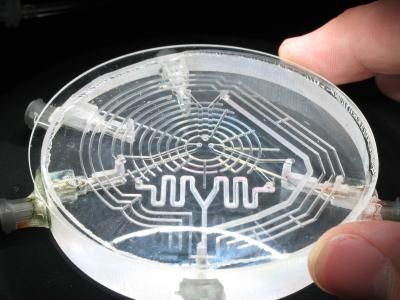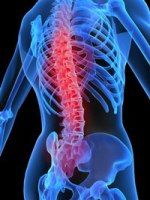Hot pepper chemical links tongue to heart
Discovery of "hot pepper" receptor in heart may explain chest pain, lead to new treatments
Advertisement
Hershey, Pa. -- The secret to heart attack chest pain may be on the tip of your tongue.
Although they may seem unlikely bedfellows, Penn State College of Medicine researchers found evidence to suggest that the same type of nerve receptors that register the burning sensation from hot peppers in the mouth may cause the sensation of chest pain from a heart attack.
"Our study is the first to demonstrate that the 'hot pepper' receptor exists on the heart and may be responsible for triggering heart attack chest pain," said Hui-Lin Pan, M.D., Ph.D., professor of anesthesiology in the Penn State College of Medicine. "Until now, the capsaicin, or 'hot pepper' receptor, was only known for sensing heat and pain from the skin. Our data suggest that the 'hot pepper' receptors could become a new target for treatment of some types of chronic chest pain, such as angina pectoris, that are resistant to other treatments."
The study, titled "Cardiac vanilloid receptor 1-expressing afferent nerves and their role in the cardiogenic sympathetic reflex in rats," was published Monday (Sept. 1) in the Journal of Physiology, accompanied by an editorial article discussing the importance of the study.
A heart attack occurs when the heart isn't receiving enough oxygen-rich blood because a heart-feeding artery is restricted or blocked. This causes the heart tissue to release chemicals like bradykinin that cause the blood vessels to enlarge, or dilate, in an attempt to increase blood flow to the heart. Those same chemicals are likely responsible for triggering symptoms of heart attack.
Using a rat model, investigators in Pan's lab first employed immunoflouresence labeling to determine if and where these receptors, called VR1 receptors, are located on the heart. In a subsequent study, they examined whether the sensory nerves containing those receptors are important in triggering the cardiovascular reflex, often associated with the constriction of blood vessels and chest pain.
One group of rats was treated with a capsaicin drug that would specifically bind and deplete the nerve containing the VR1 receptors. Another group, serving as controls, was treated with a placebo, or non-medicated, substance. The ones treated with placebo showed blood pressure and nerve activity increases when capsaicin or bradykinin was applied to the heart. The group that had the nerves "knocked out" saw no increases at all in either blood pressure or nerve activity. (The procedures and protocols were approved by the Animal Care and Use Committee of Penn State College of Medicine.)
These results suggest that active VR1 receptors trigger the cardiovascular and nerve responses of a heart attack, among them, chest pain.
Pan's findings also suggest an explanation for a clinical condition called silent ischemia, which occurs when people suffer from a heart attack with seemingly no symptoms.
"Chest pain is a warning signal that heart tissue may be damaged," Pan said. "Without this signal, we would not be able to detect the potential danger. We found that the hot pepper receptor is located only on the outermost layer of the heart. So if a person's heart attack is causing damage only to the inner heart tissue, they may not have the telltale warning sign of chest pain."
Pan's next step is to draw a definitive connection between the receptors and the triggering of chest pain. To do that, he'll look for chemicals produced by the heart tissue during a heart attack and how those interact with the receptors.
This research was funded by the National Heart, Lung, and Blood Institute of the National Institutes of Health.
Coauthors on the paper from the Penn State College of Medicine were: Matthew R. Zahner, graduate student, integrative biosciences program, De-Pei Li, postdoctoral fellow, department of anesthesia, Shao-Rui Chen, research associate, department of anesthesia.




























































